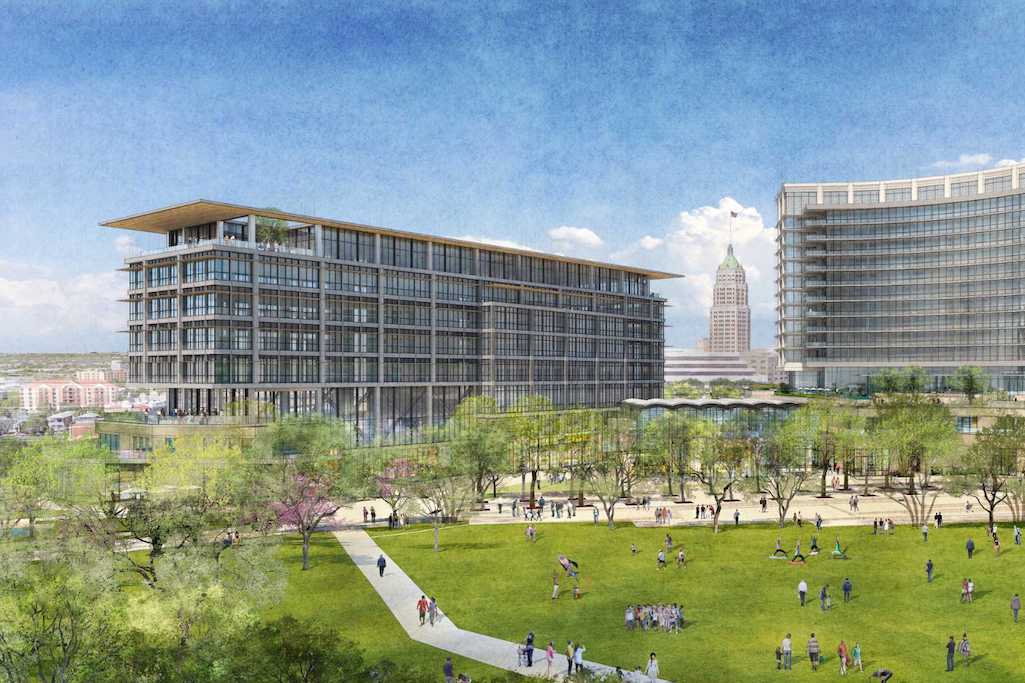How San Antonio’s Smart Urban Vision Connects Locals and Convention Groups

Skift Take
This sponsored content was created in collaboration with a Skift partner.
San Antonio is the 7th largest metropolitan region in America, but it doesn’t really feel that way due to the close proximity of so many independent businesses and attractions along the famous San Antonio River Walk.
Few people outside the region realize just how important the river and sophisticated placemaking strategies have been for the organic growth and success of the city.
Meeting planners and attendees have certainly benefited. The downtown core — anchored by the newly renovated Henry B. González Convention Center — has always been one of the most easily walkable convention center districts in the country thanks to the River Walk.
“San Antonio’s roots are linked to the river network because it’s always been a place for locals and visitors to come together,” said Suzanne Scott, general manager of the San Antonio River Authority. “The reason that it’s been so successful is because the scale of the river is so intimate compared to many other cities. We’ve also been very proactive in creating design standards protecting the river’s character with interesting landscaping and architectural elements that draw you in around every corner.”
During the last decade, the public pathways along the River Walk were extended from three to 15 miles to connect the urban core with more of San Antonio’s most intriguing neighborhoods, including the Pearl district and UNESCO World Heritage Missions.
The City of San Antonio wants to build on that. Government leaders today are continuing to embrace smart urban development that prioritizes public spaces, human connectivity, and multimodal mobility as mandated by the city’s SA2020 strategic vision.
A new $850 million bond program (the largest in the city’s history) was approved last year to invest in new parks, roads, sidewalks, bridges, and other infrastructure to make it easier and more enjoyable for locals and visitors to experience the city.
That’s in addition to hundreds of millions of private sector dollars flowing into the city’s visitor economy, including 33 new hotels in development and the 19-acre Hemisfair urban park project next to the convention center.
“All great cities have great downtowns, and many of them also have great civic parks that benefit residents and conventioneers,” said Casandra Matej, president and CEO of Visit San Antonio. “Hemisfair is going to serve as an amazing venue for major conventions, and then we have the River Walk connected directly to the convention center. There are few cities in the country with downtowns that have such a strong sense of place as we do.”
That said, many meeting planners aren’t necessarily aware of San Antonio’s expanse and breadth of infrastructure, or how it compares with other Texan cities. Common perception is often that San Antonio is a midsize city.
“That's actually a good place to be, and yes, it is surprising to many people when we say we're the 7th largest city nationally, and we're the 2nd largest city in Texas,” explained Matej. “Basically, we're one of the largest small towns in the U.S., and there's something appealing about that. We feel very manageable, we feel very hospitable. However, we do have to overcome some myths about our size because we have the amenities and resources that come with a very large city.”
https://vimeo.com/277717698
The Next Generation Convention City
After many years of planning, the City of San Antonio is redeveloping the publicly-owned Hemisfair parkland, which was the site of the 1968 World’s Fair. Since then, the park has been severely under-utilized for such a large and centrally-located piece of real estate.
The new mixed-use development will integrate an upscale 200-room hotel, locally-owned restaurants and retail, and expansive green spaces for open-air festivals and events. Promoted as “Where San Antonio Meets,” the Hemisfair project is scheduled to be completed in three phases through 2024.
“Our intention is to create one of the world’s greatest public spaces, and also re-establish the neighborhood environment and community energy that was there before the Fair,” said Andres Andujar, CEO of Hemisfair. “It’s critical that we make sure we’re attracting local businesses to participate, and we’re bringing locals in for the food and beverage, retail, and entertainment.”
He added, “If the locals are enjoying themselves, that gives convention delegates a chance to spend a day with San Antonians and enjoy Hemisfair with them.”
Hemisfair will have a range of rentable group spaces, including the Zócalo central plaza, the Great Lawn, an amphitheater, lush gardens and groves with creative water features, and various private courtyards for different sizes of events.
In effect, the overall design vision is combining the best of colonial Spanish urban planning and modern civic park design in other cities from Chicago to Stockholm.
“Everything is being done to create Hemisfair in a sustainable and authentic way that’s unique to San Antonio and honors the city’s heritage,” Andujar said. “It’s really an expression of who we are as a community.”
San Antonio’s High Line
San Antonio has experience developing these types of mega-projects. The expansion of the River Walk, for example, was the largest urban ecosystem restoration and redevelopment of its kind in the country. Altogether, more than $384 million has been invested in the River Walk since the 1990s.
“We’ve had a lot of success creating publicly-funded catalytic projects where the city and county investment in nature-based linear parks spur mixed-use development, improve our quality of life, and enhance livability,” said Scott. “We’re really proud of that because San Antonians feel very connected to their city, and we want visitors to feel that same connection as the River Walk unfolds before them.”
Looking ahead, the new San Pedro Creek Culture Park hopes to capitalize on the same successful design model as the River Walk. The $175 million project broke ground in 2016 to restore a creek with deep historical and cultural roots to San Antonio’s Hispanic heritage, by converting the San Pedro Creek from a forgotten drainage ditch into a showcase for creative urban art and architecture.
The placemaking project is somewhat similar to the elevated High Line promenade in Manhattan’s Meatpacking District and the Canal Saint-Martin District in Paris. Public and private leaders in both neighborhoods reimagined existing infrastructure to develop two of the most creative places in their cities for locals and visitors to gather.
When completed, the San Pedro Creek Culture Park will encompass 60,000 feet of new walls, four miles of walking and biking paths, 11 acres of new landscaping, eight redesigned bridges, and a vast public artworks project commissioning murals and urban art from local artists.
As such, the project is an urban laboratory for knowledge-sharing and a platform for cultural exchange exploring how communities can live and work together more productively. For meeting attendees, it’s also a unique and interesting way to experience San Antonio and connect with issues important to local residents.
“Even though it's not technically a river, it's being touted as kind of our second River Walk, if you will,” said Matej. “There's an entertainment plaza along its banks and other spaces for groups to immerse themselves in the community. These kinds of projects have a lot of appeal today for meeting planners and attendees because they’re really unique, and people can relate to what we’re trying to do. They’re just a great way to utilize the destination to enhance an event.”
This content was created collaboratively by Visit San Antonio and Skift’s branded content studio, SkiftX.




